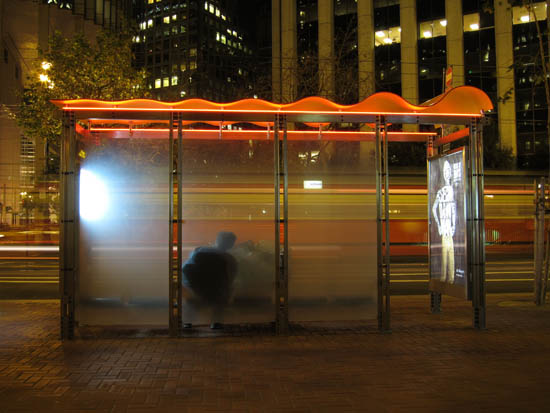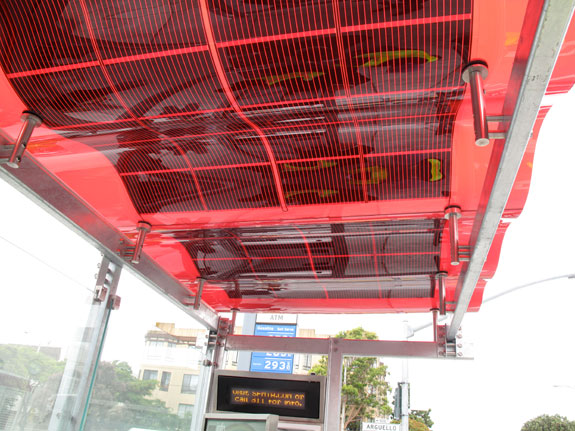
The San Francisco Municipal Transportation Agency (SFMTA) announced today that it has installed the 100th new transit shelter, representing a new aesthetic for one of the more iconic pieces of street furniture in the city.
The shelters began on a trial basis in May 2009 when Mayor Gavin Newsom showcased a solar-powered shelter on Geary and Arguello Boulevards in the Richmond. The shelters feature a new wave pattern on the roof meant to reflect both the hills of the city and the Golden Gate Bridge, according to designer Olle Lundberg of Lundberg Design.
The installations follow a two-year process to develop, design and fabricate the new shelters, which were created with the SFMTA’s transit shelter advertising and maintenance contractor, Clear Channel Outdoor.
The contract with Clear Channel requires the company to provide the new shelters and replace the existing 1,100 shelters no later than the end of 2013, in exchange for the majority of advertising rights. The SFMTA will get some of the revenue, which the agency expects to top $300 million over the 20-year term of the contract.
"San Francisco has a strong history of environmental sustainability and we pride ourselves on being a city of inclusion," Mayor Gavin Newsom said in a statement. "The new Muni shelters reflect those values and will make getting around this beautiful city easier and greener."

The original shelter pioneered a polycarbonate roof structure designed by 3form Materials Solutions, with photovoltaic laminates by Konarka Power Plastic. According to the SFMTA, the new shelters feature steel with high-recycled content as well as energy-efficient light-emitting diodes. For comparison, the florescent lights in the current shelters use 336 watts, while the new LED panels use only 74.4 watts. Though none of the other 99 shelters has been outfitted with the solar laminate, SFMTA spokesperson Paul Rose said the agency was working with Pacific Gas and Electric to install solar capability on shelters where appropriate.
Rose said the installation has been prioritized in areas of where Muni has heavy passenger traffic, particularly downtown. The shelters also provide better information for the riding public, with two maps and a large space for transit information. As NextMuni signs become available, each shelter that has a usable power source will have both the NextMuni display as well as the accompanying Push-to-Talk system to read the NextMuni information for those who are visually impaired.
"Over the past several months, it’s been exciting to see more and more of these smart new shelters in place," said SFMTA CEO Nat Ford. "These are shelters that provide more information for our customers and better accessibility. The use of environmentally sustainable features such as photovoltaics and LEDs, where feasible, ensure that their contribution goes beyond assisting our customers to benefiting the entire City."




